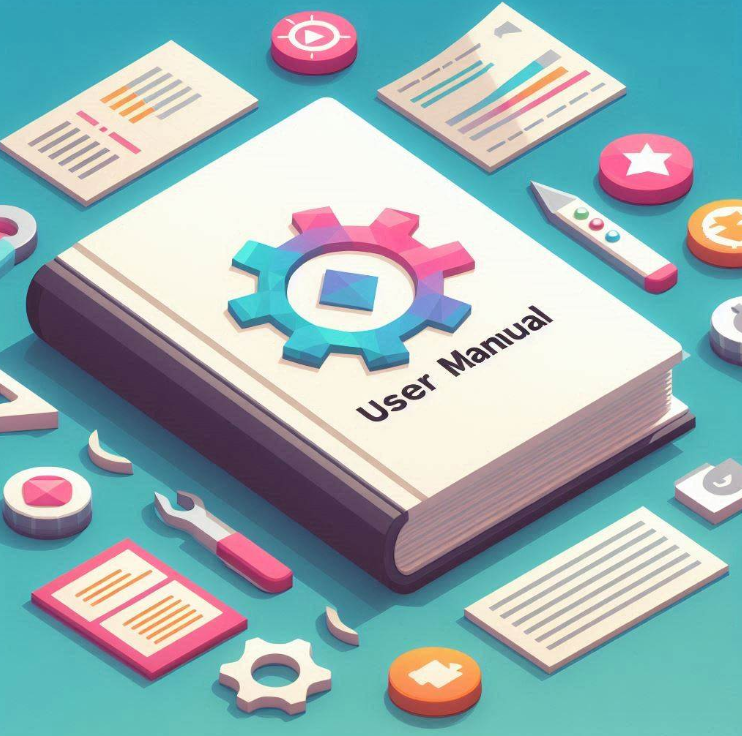- What is a User Manual?
- Types of User Manuals
- Why Do You Need a User Manual?
- How To Create A User Manual
- How to Share Your User Manual Online using Tiiny host
- What Makes a Good User Manual?
- FAQ:
- What are some common mistakes to avoid when writing a user manual?
- What are the benefits of including a troubleshooting guide in a user manual?
- What are some tips for writing user manuals for products with frequent updates?
- How can I incorporate user scenarios into the user manual?
- What tools can I use to write a user manual?
Creating a user manual can be daunting, but it’s crucial for ensuring that your users can effectively understand and use your product. A well-crafted user manual not only enhances user experience but also reduces the need for customer support.
What is a User Manual?
A user manual is a document that provides instructions on how to use a product, system, or service. It includes detailed information on installation, operation, troubleshooting, and maintenance. The primary goal of a user manual is to ensure that users can understand and use the product effectively without needing external assistance.
Types of User Manuals
User manuals can vary depending on the product and audience. Here are some common types:
- Product Manuals: Instructions for using physical products such as electronics, appliances, and machinery.
- Software Manuals: Guides for using software applications, including installation, usage, and troubleshooting.
- System Manuals: Detailed documentation for operating complex systems, often used in IT and engineering.
- Maintenance Manuals: Instructions for maintaining and servicing products or systems.
- Policy Manuals: Documentation of policies and procedures that often used in organizations.
Why Do You Need a User Manual?
A user manual is necessary to:
- Enhance User Experience
- Reduce Support Costs
- Ensure Safety and help prevent accidents and misuse.
- Comply with regulatory standards.
- Maintain Brand Reputation
Here’s a step-by-step guide to help you write an effective user manual.
How To Create A User Manual
Understand Your Audience
Before you start writing, it’s essential to know who your audience is. Understanding your users’ skill levels, needs, and expectations will help you tailor the manual to their requirements.
- Identify User Profiles: Are they beginners, intermediate, or advanced users?
- Determine User Goals: What do they need to accomplish with your product?
- Consider Language and Terminology: Use language that matches your audience’s technical expertise.
For example, Tesla has user manuals created differently for each region where the car is sold, with instructions translated into respective languages for the users to understand better.
Gather Information
Collect all necessary information about the product. This includes technical specifications, functionalities, and detailed usage instructions.
- Collaborate with SMEs: Work with subject matter experts to gather accurate information.
- Product Testing: Use the product yourself to understand its features and potential issues.
- Existing Documentation: Review any existing documents, FAQs, or support tickets for common issues.
Create an Outline
An outline helps organize the content logically and ensures that you cover all necessary aspects of the product. Here are a few topics you should consider adding to your user manual:
- Introduction
- Setup Instructions
- Basic Operations
- Advanced Features
- Troubleshooting
- FAQ Section
- Glossary
This outline can also help create the Table of Contents for your manual. For example, in this picture from JBL’s User Manual, you can see an outline of all the information provided, from basic to advanced.
Write Clear Instructions
When writing instructions, clarity is paramount. Use simple language and break down complex processes into manageable steps. Employ a step-by-step format by numbering each step and using bullet points for sub-steps. Ensure consistent terminology throughout the manual to avoid confusion, and use actionable, imperative sentences such as “Click the ‘Start’ button” to guide users effectively.
The following example from JBL’s manual shows that they’ve used concise sentences that allow users to easily understand how a task is to be done.
Use Visual Elements
Visual elements help in making the manual more engaging and easier to understand.
- Diagrams and Flowcharts: Explain processes and workflows visually.
- Screenshots: Show exact steps, especially for software products.
- Icons and Symbols: Use universally recognized symbols to indicate warnings, tips, and important information.
Tesla has done an excellent job of this; they included pictures of the car with appropriately labeled numbers and their description written below them.
Test the Instructions
Ensure instructions are accurate and easy to follow by testing them. Conduct beta testing with a group of users and gather feedback, then revise accordingly based on their input. Finally, proofread to check for grammatical errors and ensure clarity.
Format the Manual
A well-formatted manual is easier to navigate and use.
- Table of Contents: Include a table of contents for easy navigation.
- Headers and Subheaders: Use headers to break down sections and subsections.
- Page Numbering: Number the pages for easy reference.
- Consistent Style: Use consistent fonts, sizes, and styles throughout the document.
Distribute the Manual
Once the manual is complete, make it accessible to your users using various mediums, such as distributing physical copies with the product, offering downloadable PDFs or offering online versions.
How to Share Your User Manual Online using Tiiny host
The best way to share your User Manual is through Tiiny.host, which lets you publish your manual online and distribute it easily with a few simple steps.
- Navigate to the Tiiny.host’s homepage
- Upload your PDF file
- Give your link a name or leave it blank
- Create an account or sign in, then hit publish
If you want a quick video guide on turning your manual into a shareable website, you can check this out.
If you need any help while hosting your user manual, you can contact our support executives.
What Makes a Good User Manual?
To make a User Manual easy to read, keep in mind the following:
- Clarity: Use simple, straightforward language to ensure that instructions are easy to understand.
- Accuracy: Provide accurate and up-to-date information to avoid confusion and errors.
- Comprehensiveness: Cover all aspects of the product, including setup, usage, troubleshooting, and maintenance.
- User-Friendly Layout: Organize the content logically with a clear structure, headings, and subheadings.
- Visual Aids: Include diagrams, screenshots, and images to illustrate steps and concepts.
- Consistency: Use consistent terminology, style, and formatting throughout the manual.
- Accessibility: Ensure the manual is easily accessible in both print and digital formats.
FAQ:
What are some common mistakes to avoid when writing a user manual?
Common mistakes include using overly technical jargon, not organizing content logically, neglecting to include visual aids, and failing to update the manual regularly to reflect product changes.
What are the benefits of including a troubleshooting guide in a user manual?
A troubleshooting guide helps users resolve common issues independently, reduces the need for customer support, and enhances user satisfaction by providing quick solutions.
What are some tips for writing user manuals for products with frequent updates?
If continuous updates are needed, an online user manual might be the best fit. Develop a system for regular manual updates, use a modular format for easy revisions, and keep users informed of changes through update notifications or a dedicated update section in the manual.
How can I incorporate user scenarios into the user manual?
Develop realistic user scenarios that demonstrate how the product can be used in various contexts. Include these scenarios as case studies or examples to provide practical insights and usage tips.
What tools can I use to write a user manual?
Key tools for writing a user manual include Microsoft Word and Google Docs for text content, Adobe InDesign and Scribus for layout design, MadCap Flare and Adobe FrameMaker for technical writing, Lucidchart and Microsoft Visio for diagrams, and Snagit and Greenshot for capturing and annotating screenshots. These tools collectively help create a comprehensive and professional user manual.



